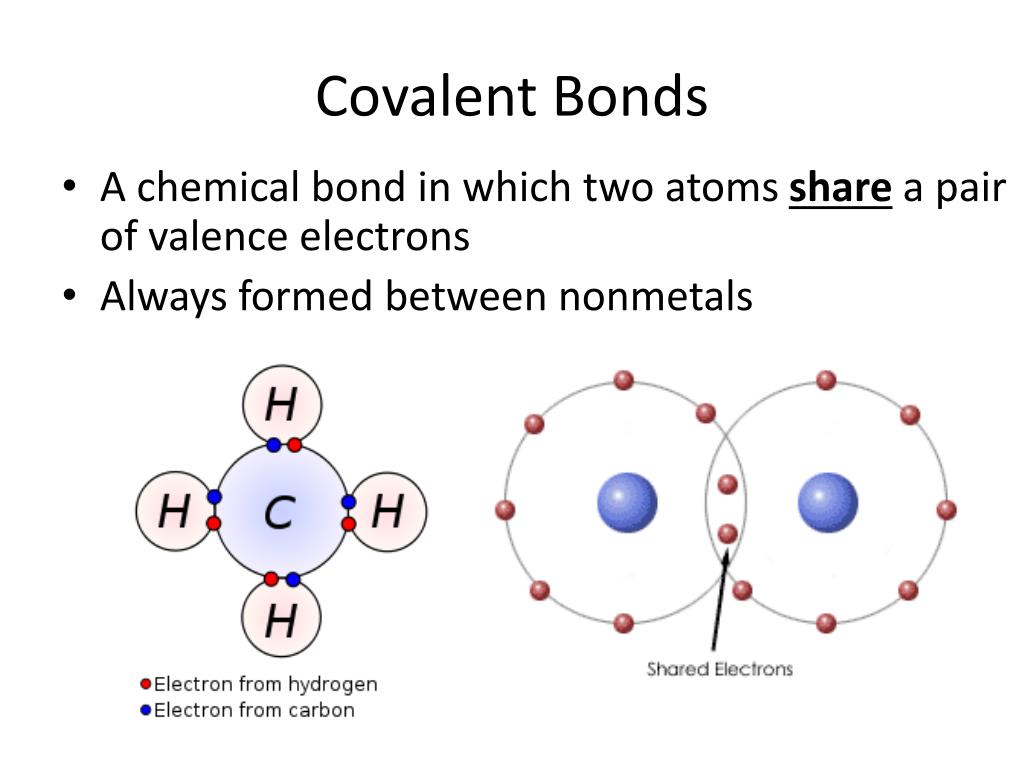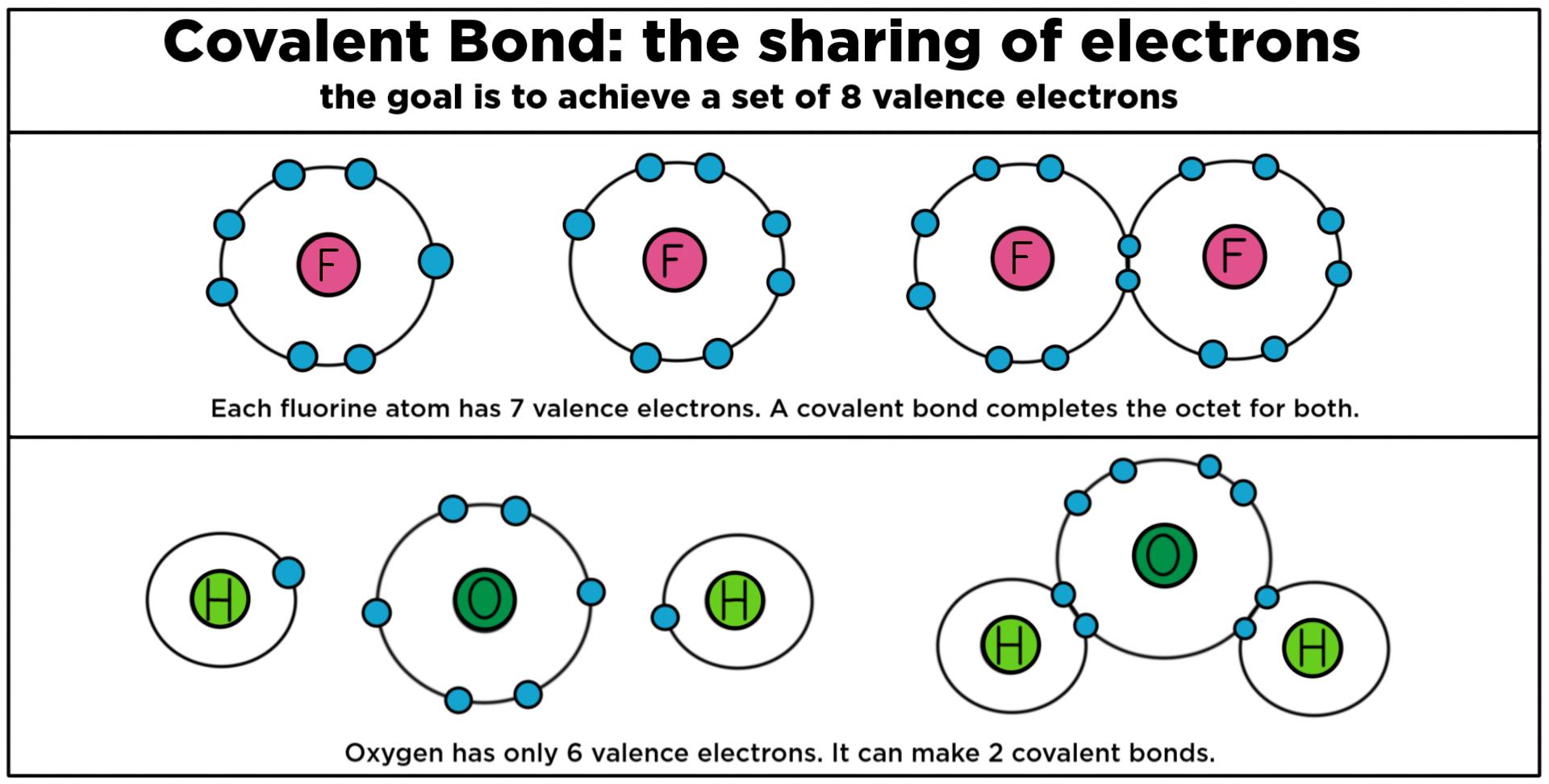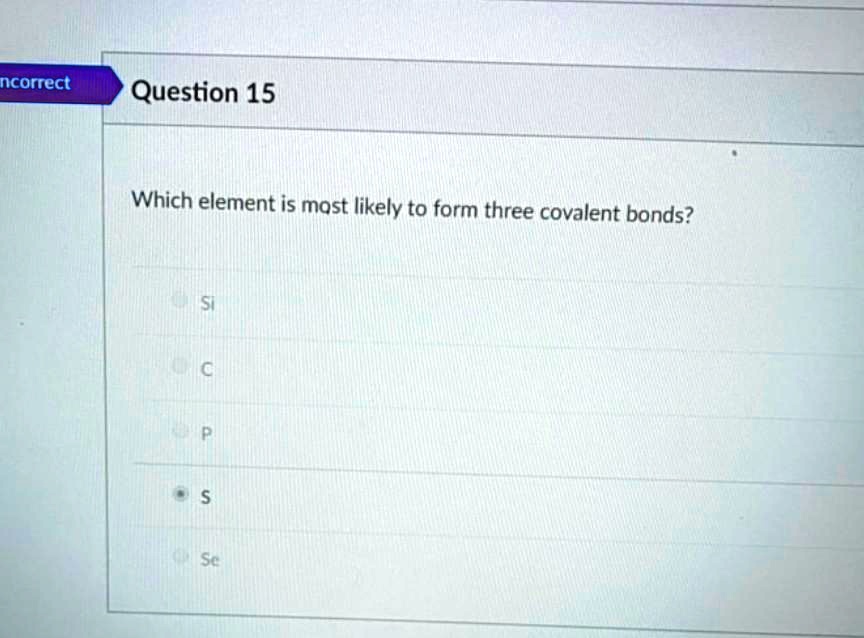Which Element Is Most Likely To Form Three Covalent Bonds
Which Element Is Most Likely To Form Three Covalent Bonds - The most common examples are the covalent compounds of beryllium and boron. For the dot structure shown the most likely elements are x =________ and y = ________. The most likely element to form three covalent bonds. Which element is most likely to form three covalent bonds? To obtain an octet, these atoms form three covalent bonds, as in nh 3 (ammonia). After analyzing the properties of various elements, we can conclude that. Which element is most likely to make two covalent bonds in the formation of a molecular compound? A) phosphorus b) nitrogen c) sulfur d) bromine Which element is most likely to form three covalent. Oxygen and other atoms in group 6a (16) obtain an octet.
After analyzing the properties of various elements, we can conclude that. Which element is most likely to form three covalent bonds? Oxygen and other atoms in group 6a (16) obtain an octet. The most common examples are the covalent compounds of beryllium and boron. Which element is most likely to form three covalent. A) phosphorus b) nitrogen c) sulfur d) bromine For the dot structure shown the most likely elements are x =________ and y = ________. Each of the 3 chlorines then forms a covalent bond by merging the atomic orbital containing its unpaired electron with one of the. Which element is most likely to make two covalent bonds in the formation of a molecular compound? To obtain an octet, these atoms form three covalent bonds, as in nh 3 (ammonia).
Oxygen and other atoms in group 6a (16) obtain an octet. Each of the 3 chlorines then forms a covalent bond by merging the atomic orbital containing its unpaired electron with one of the. The most common examples are the covalent compounds of beryllium and boron. A) phosphorus b) nitrogen c) sulfur d) bromine The most likely element to form three covalent bonds. To obtain an octet, these atoms form three covalent bonds, as in nh 3 (ammonia). Which element is most likely to make two covalent bonds in the formation of a molecular compound? The distance between two nuclei when repulsion and attraction are balanced. After analyzing the properties of various elements, we can conclude that. Which element is most likely to form three covalent.
Solved Which element is likely to form one covalent bond in
The distance between two nuclei when repulsion and attraction are balanced. The most common examples are the covalent compounds of beryllium and boron. After analyzing the properties of various elements, we can conclude that. For the dot structure shown the most likely elements are x =________ and y = ________. To obtain an octet, these atoms form three covalent bonds,.
Covalent Bonds Form When Valence Electrons
Oxygen and other atoms in group 6a (16) obtain an octet. After analyzing the properties of various elements, we can conclude that. The most common examples are the covalent compounds of beryllium and boron. The most likely element to form three covalent bonds. To obtain an octet, these atoms form three covalent bonds, as in nh 3 (ammonia).
PPT Covalent Bonds PowerPoint Presentation, free download ID6647183
Which element is most likely to form three covalent. A) phosphorus b) nitrogen c) sulfur d) bromine For the dot structure shown the most likely elements are x =________ and y = ________. To obtain an octet, these atoms form three covalent bonds, as in nh 3 (ammonia). For example, beryllium can form two covalent bonds, resulting.
Covalent Bonding (Biology) — Definition & Role Expii
For the dot structure shown the most likely elements are x =________ and y = ________. For example, beryllium can form two covalent bonds, resulting. Oxygen and other atoms in group 6a (16) obtain an octet. After analyzing the properties of various elements, we can conclude that. Which element is most likely to form three covalent.
Question Video Identifying Pairs of Elements Likely to Bond Covalently
Which element is most likely to form three covalent. The most common examples are the covalent compounds of beryllium and boron. The distance between two nuclei when repulsion and attraction are balanced. For example, beryllium can form two covalent bonds, resulting. Oxygen and other atoms in group 6a (16) obtain an octet.
Solved which element is most likely to make two covalent
Oxygen and other atoms in group 6a (16) obtain an octet. Which element is most likely to form three covalent bonds? The most likely element to form three covalent bonds. For example, beryllium can form two covalent bonds, resulting. A) phosphorus b) nitrogen c) sulfur d) bromine
SOLVED Question 15 Which element is most likely to form three covalent
A) phosphorus b) nitrogen c) sulfur d) bromine The distance between two nuclei when repulsion and attraction are balanced. Which element is most likely to form three covalent bonds? Which element is most likely to form three covalent. The most likely element to form three covalent bonds.
Covalent bonds Learning Lab
The most likely element to form three covalent bonds. For example, beryllium can form two covalent bonds, resulting. A) phosphorus b) nitrogen c) sulfur d) bromine The most common examples are the covalent compounds of beryllium and boron. Which element is most likely to make two covalent bonds in the formation of a molecular compound?
Covalent Bonds Biology for Majors I
For example, beryllium can form two covalent bonds, resulting. The most likely element to form three covalent bonds. For the dot structure shown the most likely elements are x =________ and y = ________. Which element is most likely to make two covalent bonds in the formation of a molecular compound? The distance between two nuclei when repulsion and attraction.
Which diagram shows how the covalent bonds most likely form in a
The distance between two nuclei when repulsion and attraction are balanced. After analyzing the properties of various elements, we can conclude that. To obtain an octet, these atoms form three covalent bonds, as in nh 3 (ammonia). For the dot structure shown the most likely elements are x =________ and y = ________. For example, beryllium can form two covalent.
Which Element Is Most Likely To Form Three Covalent Bonds?
Which element is most likely to make two covalent bonds in the formation of a molecular compound? Each of the 3 chlorines then forms a covalent bond by merging the atomic orbital containing its unpaired electron with one of the. To obtain an octet, these atoms form three covalent bonds, as in nh 3 (ammonia). For example, beryllium can form two covalent bonds, resulting.
For The Dot Structure Shown The Most Likely Elements Are X =________ And Y = ________.
After analyzing the properties of various elements, we can conclude that. A) phosphorus b) nitrogen c) sulfur d) bromine The most common examples are the covalent compounds of beryllium and boron. The distance between two nuclei when repulsion and attraction are balanced.
Oxygen And Other Atoms In Group 6A (16) Obtain An Octet.
Which element is most likely to form three covalent. The most likely element to form three covalent bonds.









